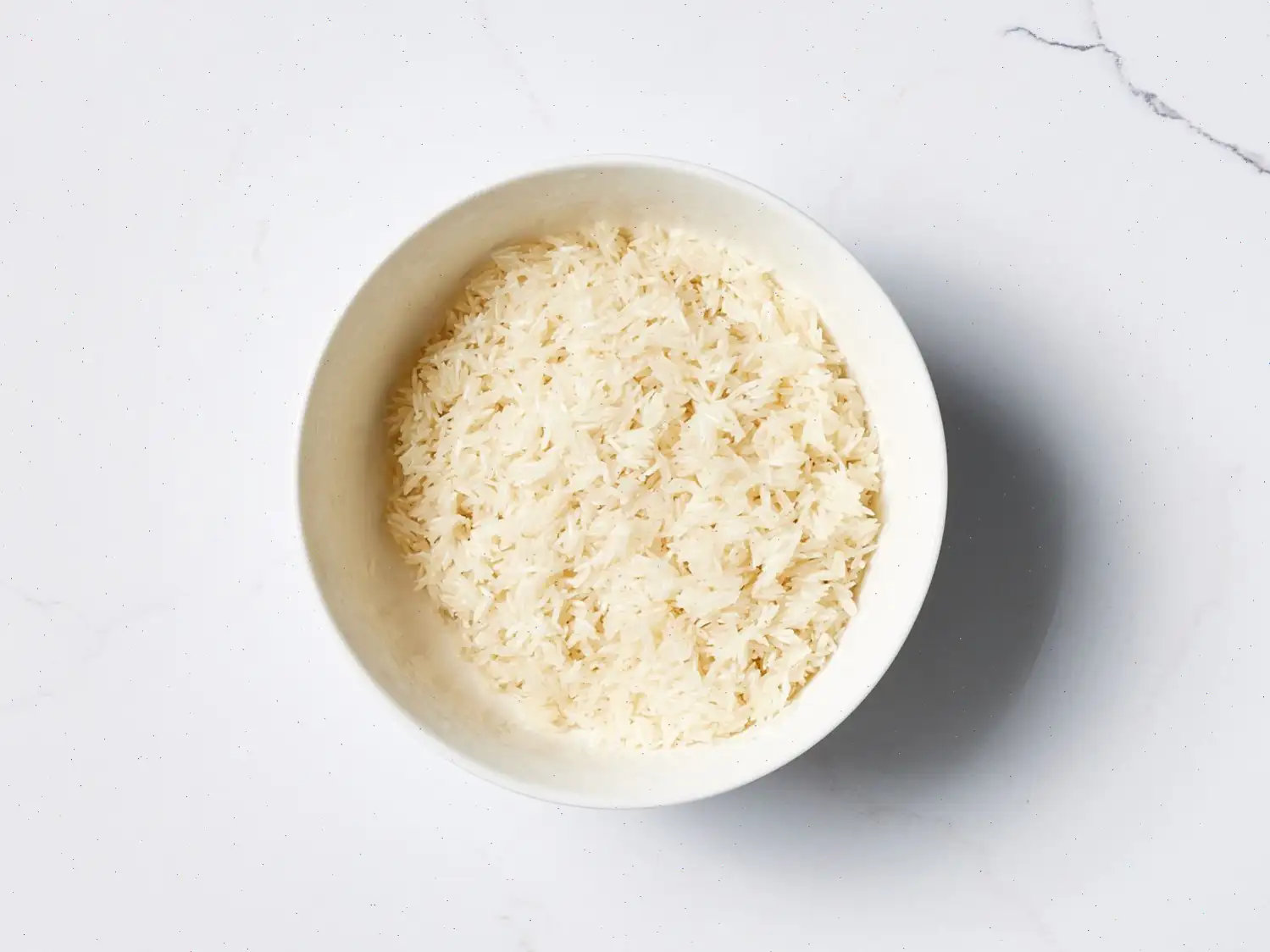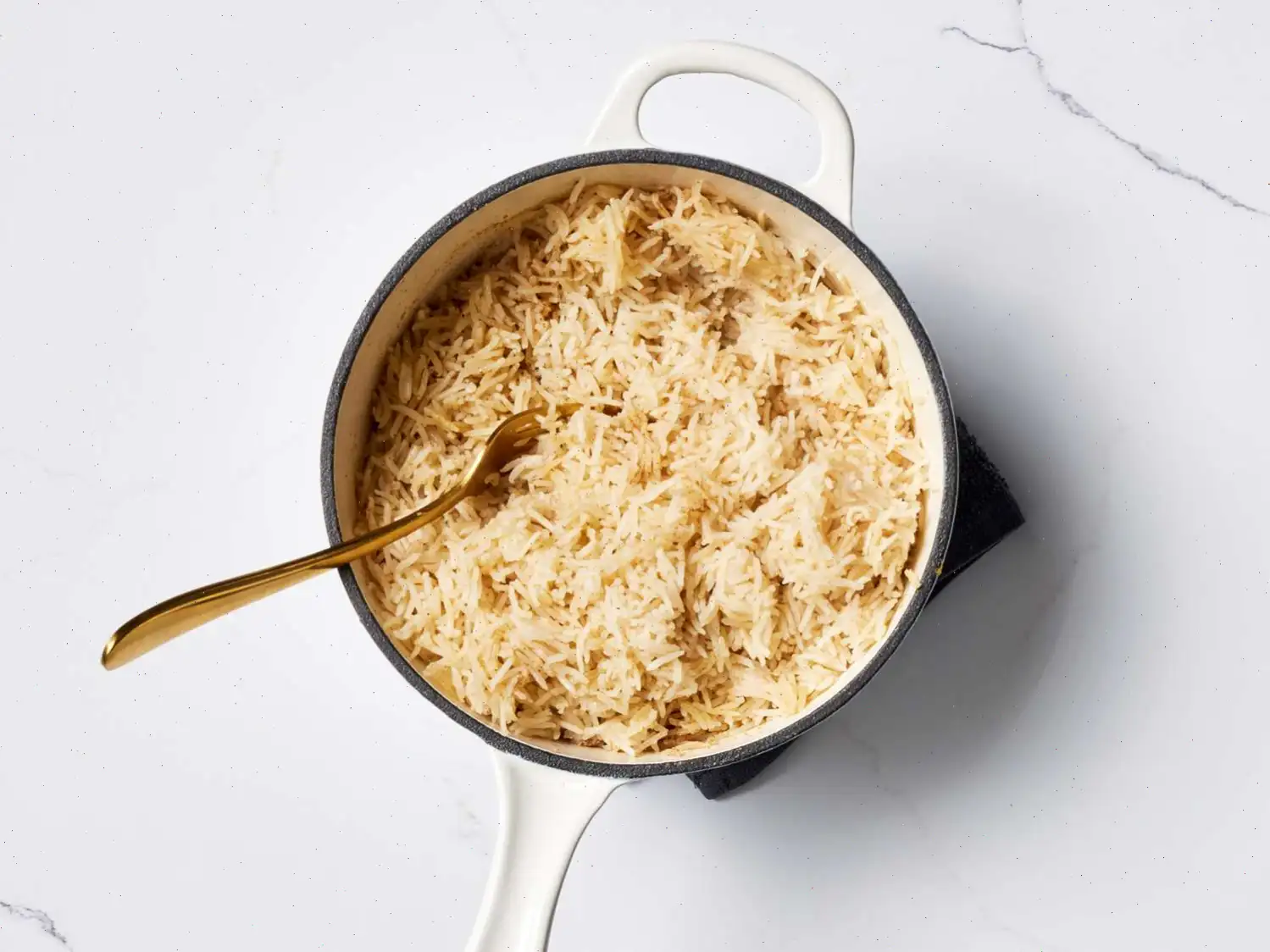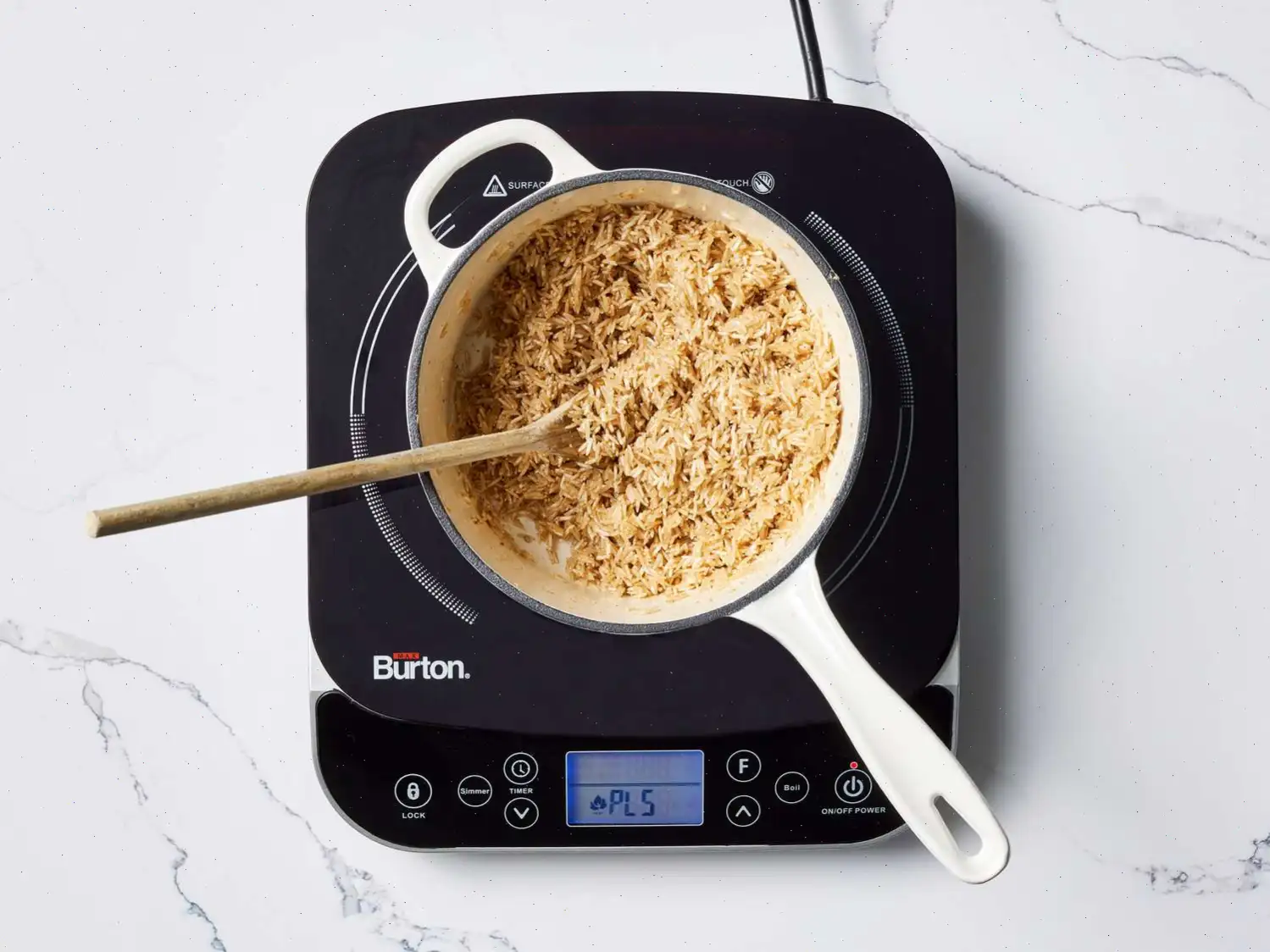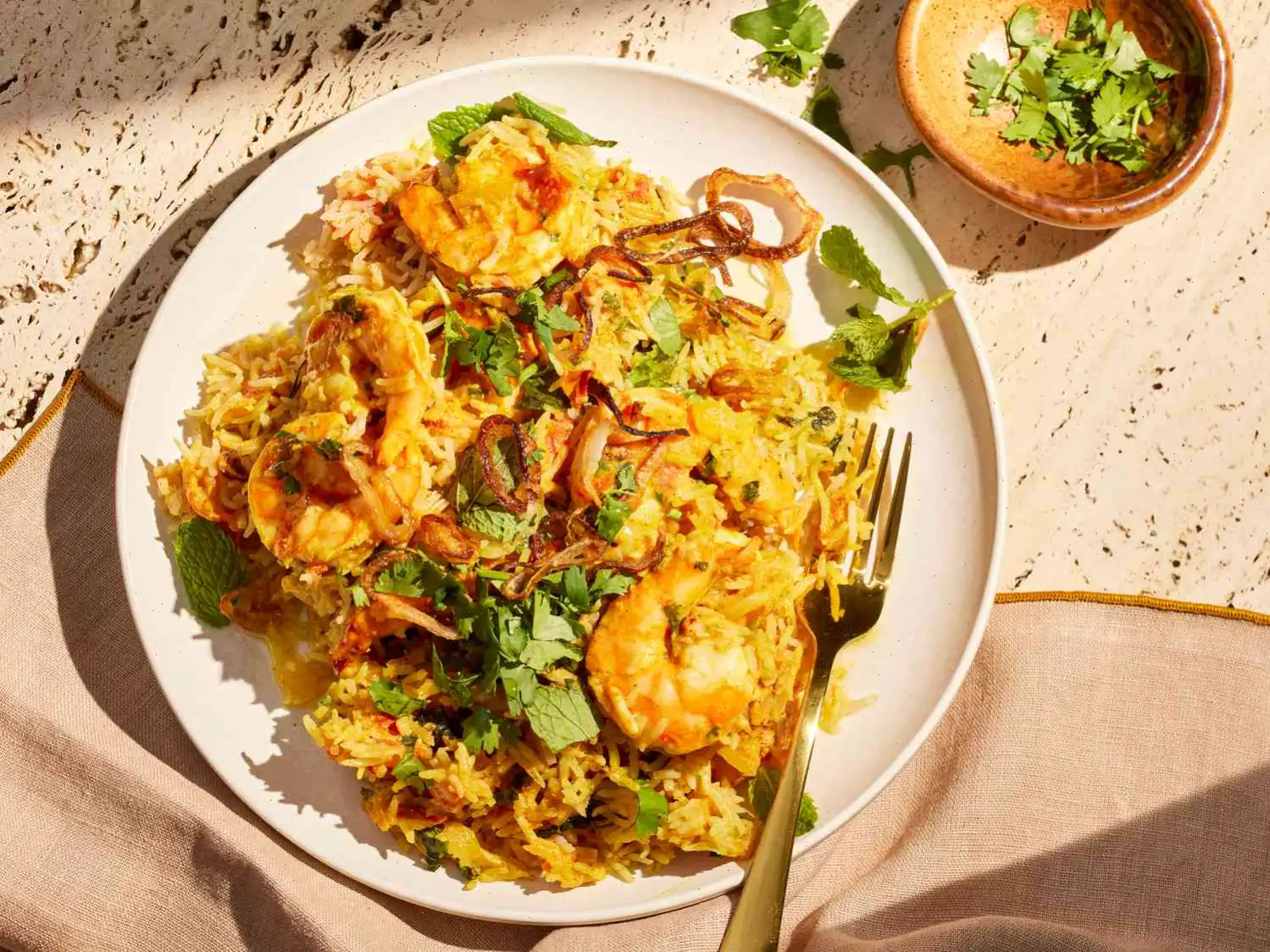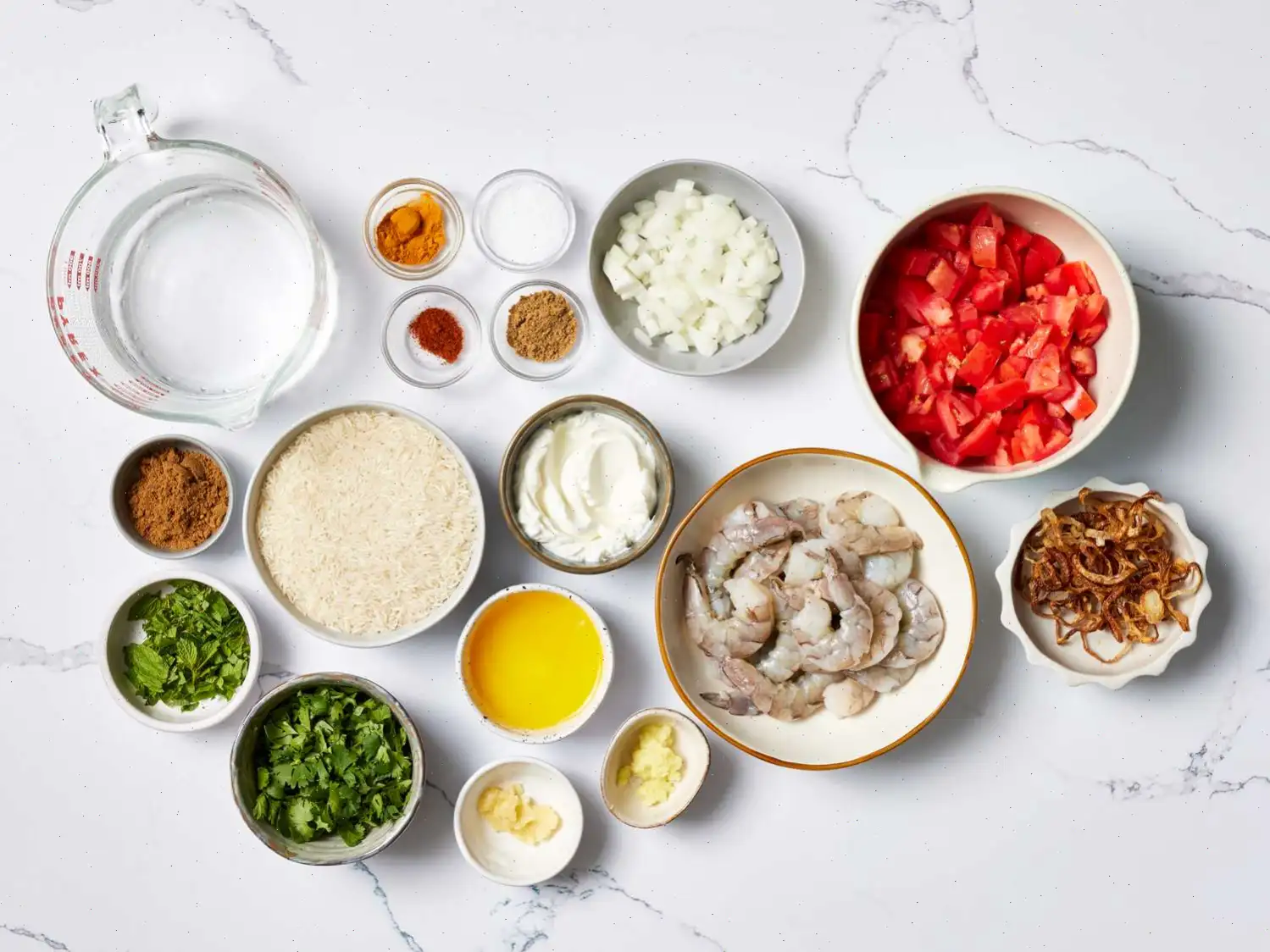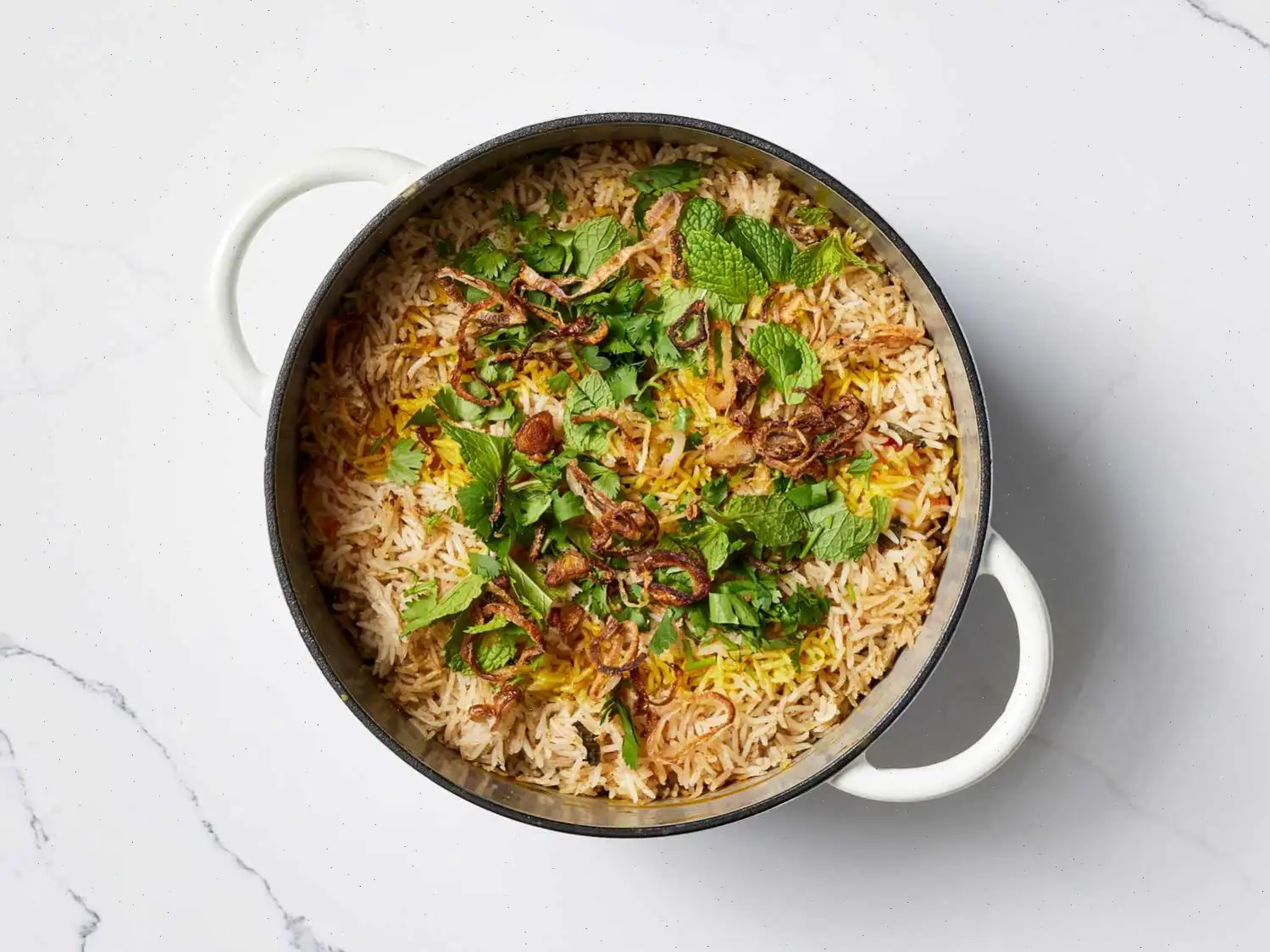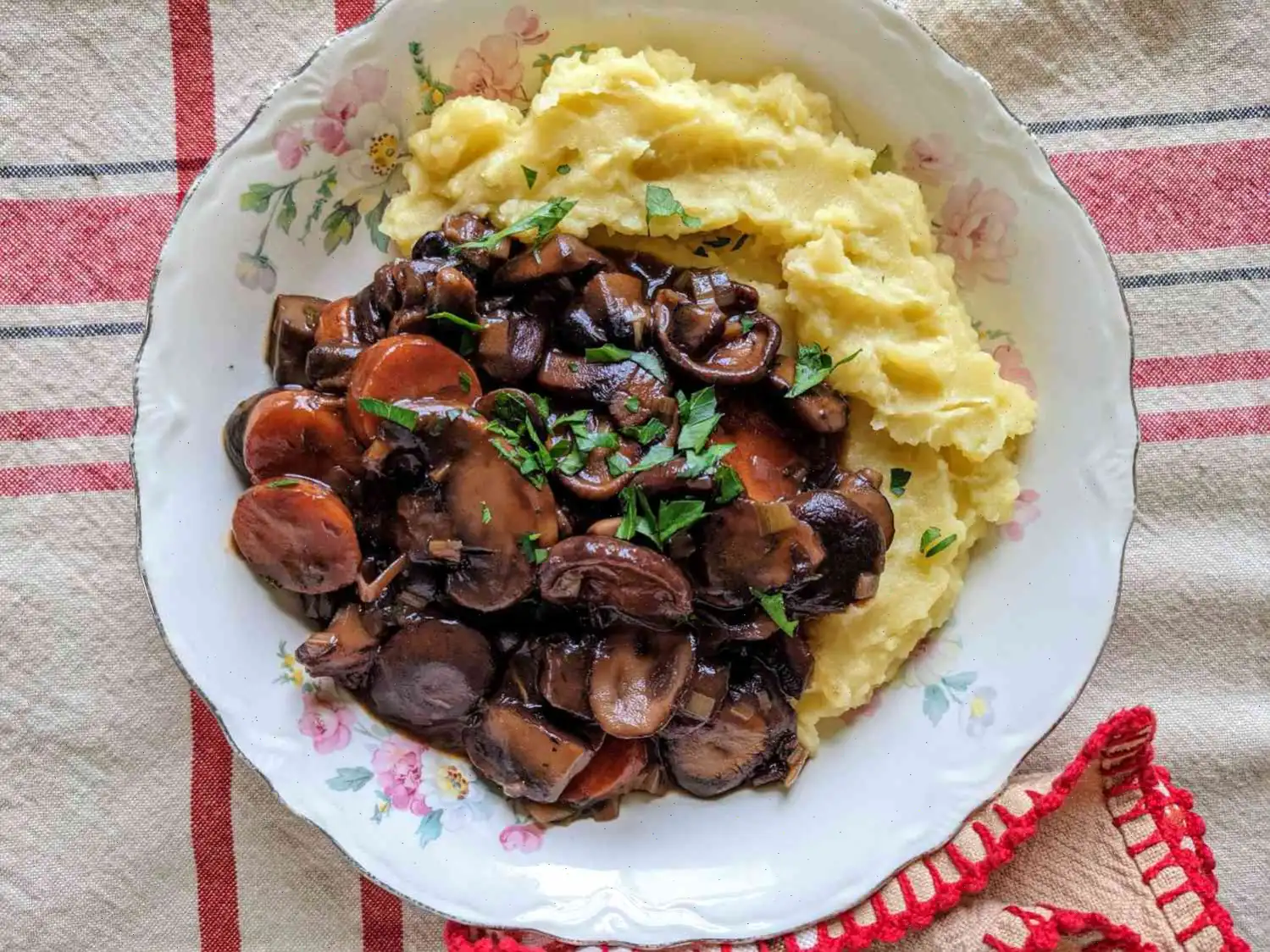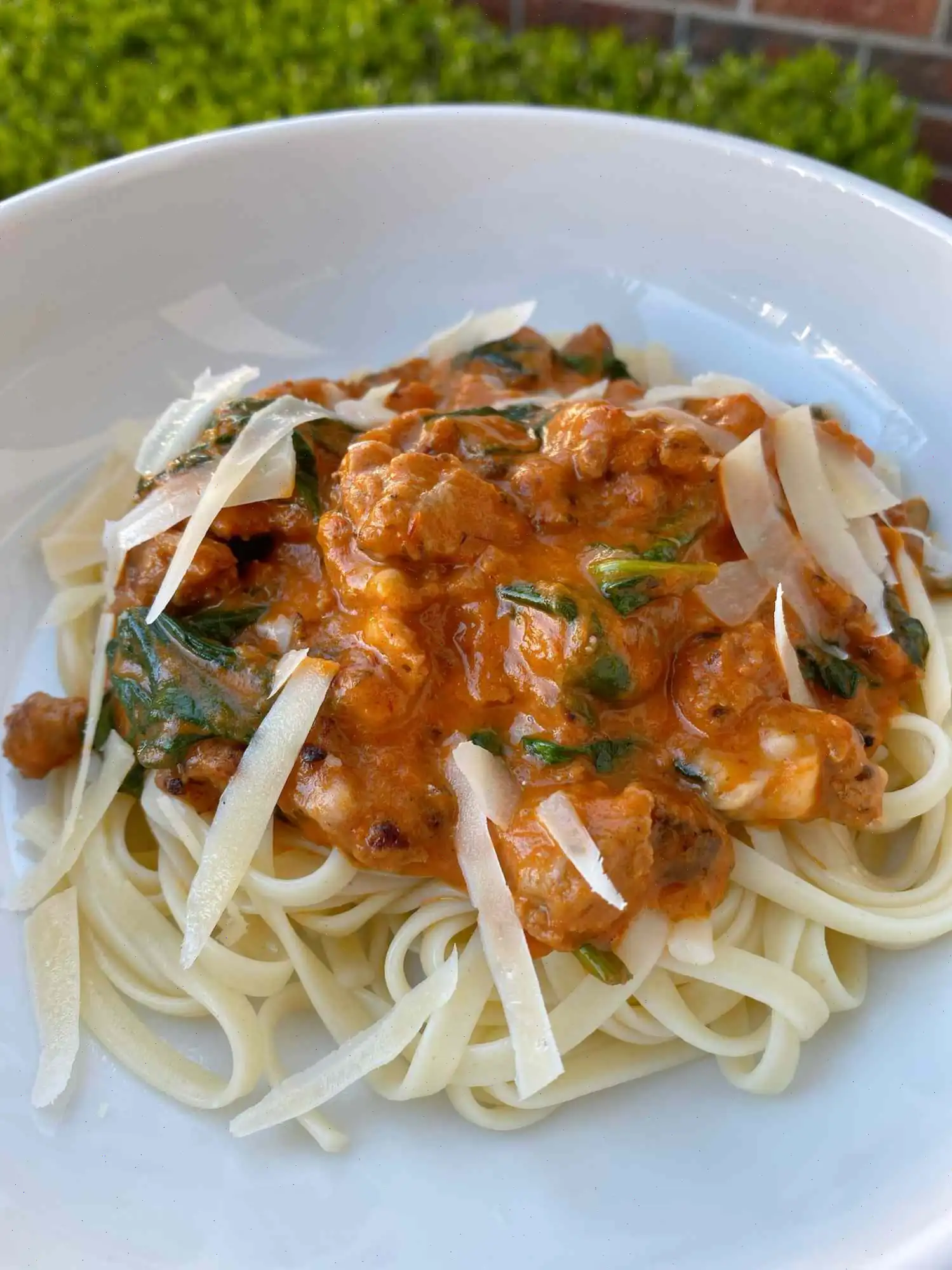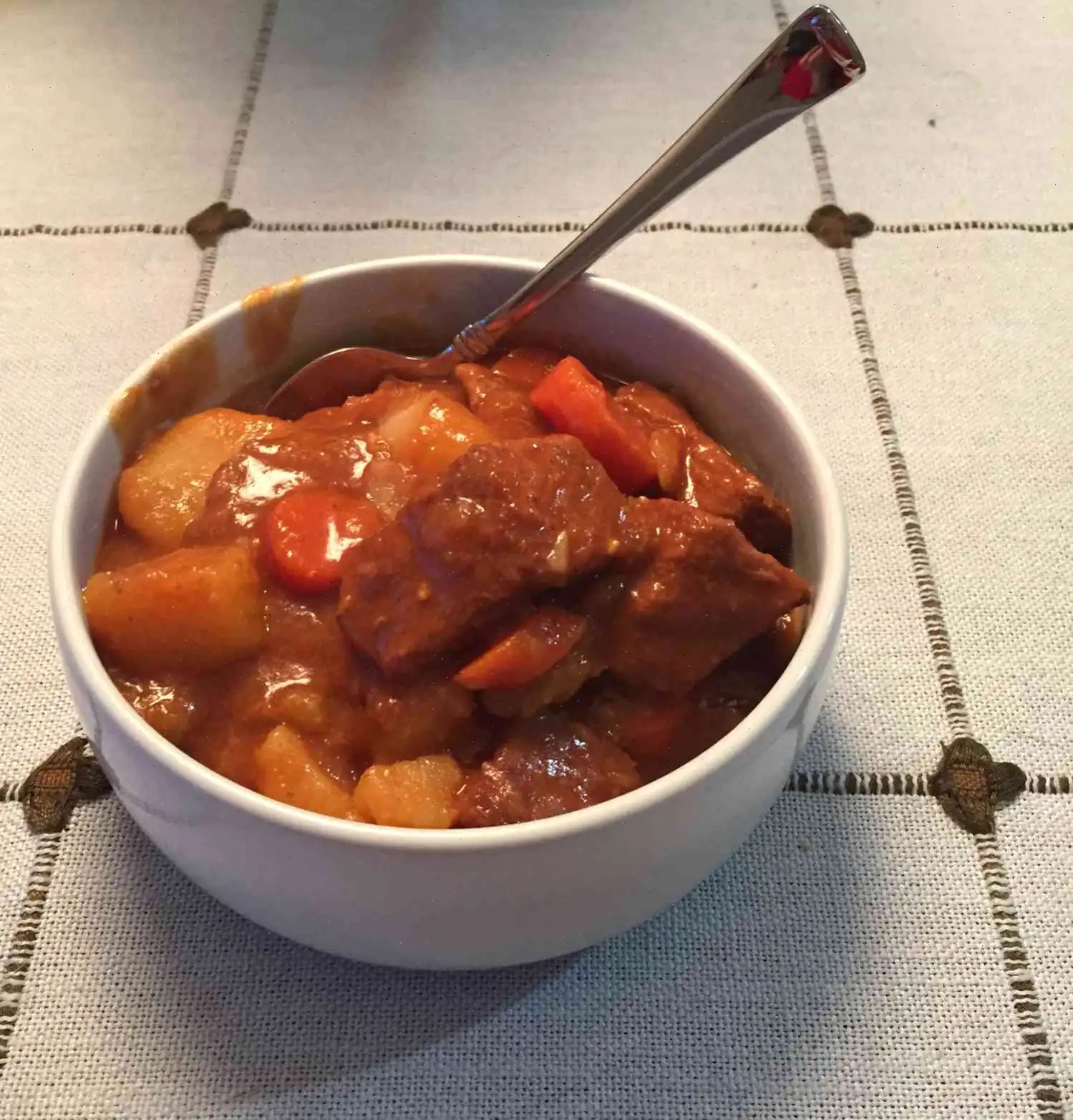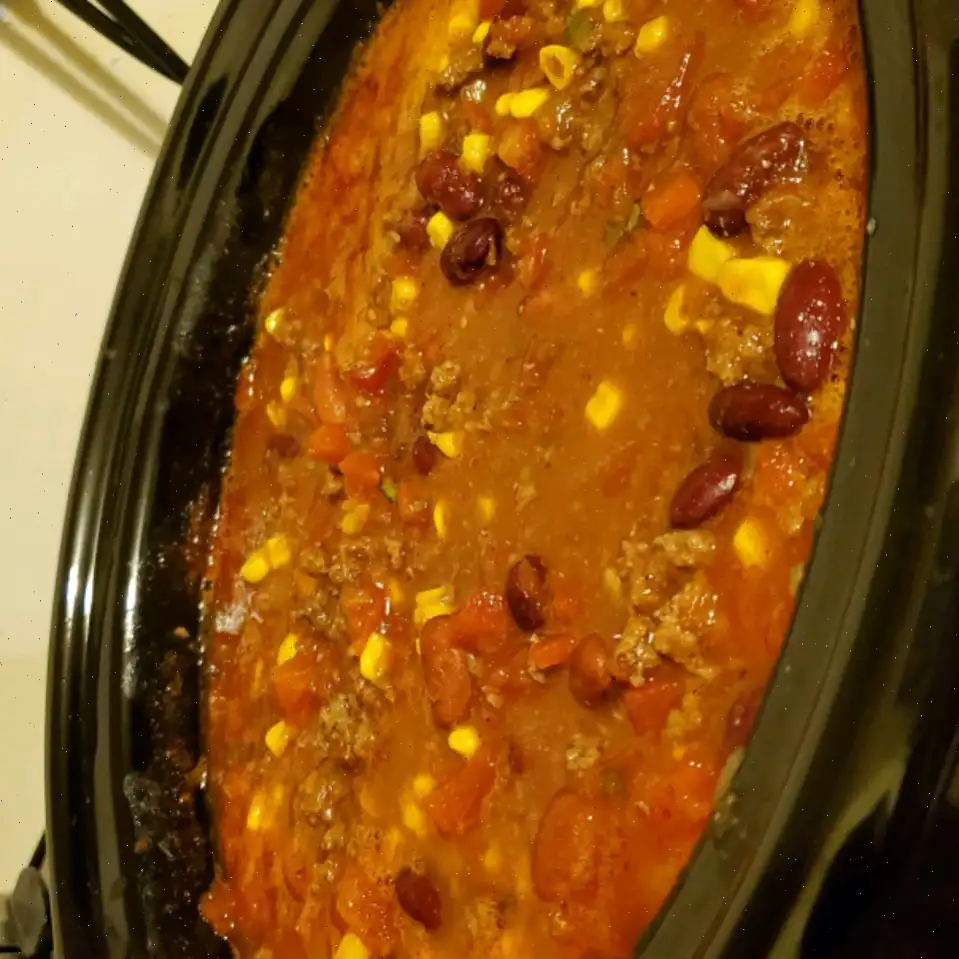
Shrimp Biryani Recipe
This flavorful Shrimp Biryani combines aromatic basmati rice, succulent shrimp, and a rich blend of spices. Perfect for a family meal or any special occasion.
Ingredients
- 2 cups uncooked aged basmati rice
- 6 tablespoons ghee, divided, plus more for drizzling
- 1 tablespoon plus 2 1/2 teaspoons garam masala, divided
- 3 1/2 teaspoons kosher salt, divided
- 2 teaspoons grated garlic, divided
- 2 teaspoons grated fresh ginger, divided
- 1 teaspoon ground coriander, divided
- 2 1/4 cups water
- 1/2 cup plain whole-milk strained (Greek-style) yogurt
- 1/4 teaspoon cayenne pepper
- 1 pound large raw shrimp, peeled, deveined, and tails removed
- 1/2 cup chopped yellow onion
- 2 1/2 cups chopped plum tomatoes
- 1 teaspoon ground turmeric
- 1/2 cup fresh cilantro, divided
- 2 tablespoons fresh mint, divided
- 1/4 cup crispy fried onions or shallots, or as needed
Directions
Step 1
Gather all ingredients to ensure everything is ready before you start cooking.
Step 2
Place the rice in a large bowl, covering it with cold running water. Agitate the rice with your hands to release excess starch, and pour off the water. Repeat this process until the water is mostly clear, about 4 to 5 times.
Step 3
Heat 2 tablespoons of ghee in a medium saucepan over medium-high heat. Add 1 tablespoon garam masala, 2 teaspoons salt, 1 teaspoon each of grated garlic and ginger, and 1/2 teaspoon coriander. Stir constantly for about 1 minute, until fragrant.
Step 4
Add the rice to the saucepan, stirring constantly to coat the rice in ghee and spices for 1 to 2 minutes.
Step 5
Pour in 2 1/4 cups of water and stir. Bring the mixture to a boil over high heat. Stir again, then cover with a tight-fitting lid. Reduce the heat to medium-low and simmer undisturbed for about 12 minutes, until the rice is just tender. Remove from heat and fluff the rice with a fork. Set aside.
Step 6
Meanwhile, whisk together yogurt, cayenne pepper, 1/2 teaspoon garam masala, and 1/2 teaspoon salt. Add the shrimp to the mixture and toss to coat. Set aside.
Step 7
Preheat the oven to 350F (175C).
Step 8
In a large Dutch oven or oven-safe saucepan, heat the remaining 2 tablespoons of ghee over medium-high heat. Add the chopped onion and cook for about 4 minutes, stirring occasionally, until the onion begins to soften.
Step 9
Add the chopped tomatoes and cook for another 3 minutes, stirring occasionally, until the tomatoes release their juices and soften.
Step 10
Add 1/2 teaspoon turmeric, 2 teaspoons garam masala, 1 teaspoon salt, 1 teaspoon garlic, 1 teaspoon ginger, and 1/2 teaspoon coriander. Stir constantly for about 1 minute, until the spices become fragrant.
Step 11
Reduce the heat to medium and cook for another 8 minutes, stirring occasionally, until the tomatoes break down and the mixture thickens into a sauce-like consistency.
Step 12
Remove from heat and stir in the shrimp mixture until fully combined. Add 1/4 cup cilantro and 1 tablespoon mint. Remove about half (1 heaping cup) of the shrimp mixture from the Dutch oven and set it aside in a medium bowl.
Step 13
Spread the remaining shrimp mixture evenly in the Dutch oven. Top with half (about 3 cups) of the cooked rice. Add the reserved shrimp mixture over the rice, then sprinkle with 2 tablespoons cilantro and 1/2 tablespoon mint.
Step 14
Add the remaining rice over the shrimp mixture and spread it evenly.
Step 15
Melt the remaining 2 tablespoons of ghee in a small bowl and stir in the remaining 1/2 teaspoon turmeric. Drizzle the mixture over the rice.
Step 16
Cover the Dutch oven with a lid and bake in the preheated oven for 13 to 15 minutes, until the shrimp are fully cooked and bright pink on the outside. Remove from the oven and take off the lid. The shrimp should be opaque inside.
Step 17
Top the biryani with the remaining 2 tablespoons cilantro and 1/2 tablespoon mint. Add fried onions and drizzle with extra melted ghee, if desired. Serve immediately and enjoy!
Nutrition Facts (per serving)
- Calories: 294
- Total Fat: 15g (19% DV)
- Saturated Fat: 8g (42% DV)
- Cholesterol: 129mg (43% DV)
- Sodium: 1210mg (53% DV)
- Total Carbohydrate: 25g (9% DV)
- Dietary Fiber: 2g (9% DV)
- Total Sugars: 4g
- Protein: 15g (30% DV)
- Vitamin C: 11mg (13% DV)
- Calcium: 106mg (8% DV)
- Iron: 2mg (13% DV)
- Potassium: 394mg (8% DV)
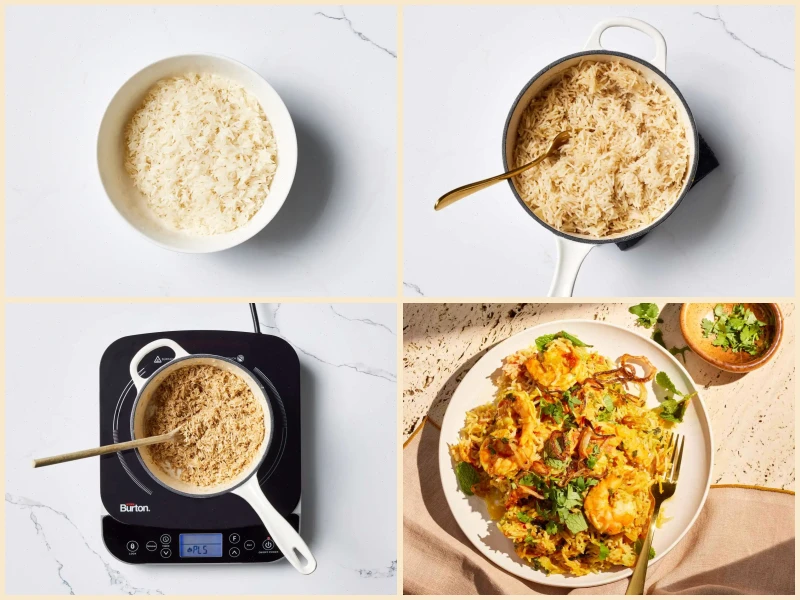
The Rich Story of Shrimp Biryani
Shrimp biryani is a culinary gem that traces its roots to the Indian subcontinent, where biryani itself evolved as a fusion of Persian and Indian cooking traditions. The dish likely emerged during the Mughal era, when rice-based layered meals were a symbol of royal feasts. Shrimp, or prawns, became a favored variation along the coastal regions of India, particularly in states like Kerala, Goa, and West Bengal, where seafood is abundant.
Regional Characteristics
Regional interpretations of shrimp biryani are diverse. In Kerala, the dish is often infused with coconut milk and curry leaves, giving it a subtly sweet, aromatic flavor. Goan versions may feature tangy vinegar and chili, reflecting Portuguese culinary influence. In contrast, Bengali shrimp biryani emphasizes mustard oil and fresh herbs, offering a sharper, more pungent taste. These regional tweaks showcase local ingredients and preferences while maintaining the core biryani technique of layering rice with marinated shrimp and spices.
Distinctive Features Compared to Similar Dishes
While biryani shares similarities with pilaf and pulao, shrimp biryani stands out due to its layering technique, complex spice profile, and the use of marinated seafood. Unlike simple rice dishes, biryani involves a slow-cooked, sealed process called dum, which allows the flavors of shrimp, ghee, yogurt, and aromatic spices like garam masala, turmeric, and coriander to meld perfectly. The contrast of tender shrimp with fluffy, fragrant basmati rice distinguishes it from other seafood rice dishes that mix ingredients uniformly without layering.
Where It Is Typically Served
Shrimp biryani is traditionally a celebratory dish, often served during weddings, festivals, and family gatherings in coastal India. Today, it has crossed borders, appearing in Indian restaurants worldwide, ranging from casual dining to fine dining establishments. It is commonly accompanied by side dishes like raita (yogurt-based salad), pickles, or fresh salad, enhancing the overall balance of flavors.
Interesting Facts
- Shrimp biryani is often layered with fried onions, cilantro, and mint, which not only add flavor but also create a visually appealing presentation.
- The dish can be adapted to different heat levels and spice blends, making it versatile for international palates.
- Using aged basmati rice is essential, as it absorbs flavors better and prevents clumping, ensuring the signature fluffy texture.
- Historically, biryani was considered a luxurious dish reserved for royal kitchens, and shrimp, being a prized coastal delicacy, added to its prestige.
- The process of marinating shrimp in yogurt and spices helps tenderize the seafood while infusing it with deep flavor before layering with rice.
Shrimp biryani is more than just a meal; it is a celebration of Indian culinary heritage, blending history, regional diversity, and intricate cooking techniques into every fragrant, savory bite.
You can listen to this recipe in AI audio format. Simply click the play button below to listen to the content in a format that suits you best. It’s a great way to absorb information on the go!


